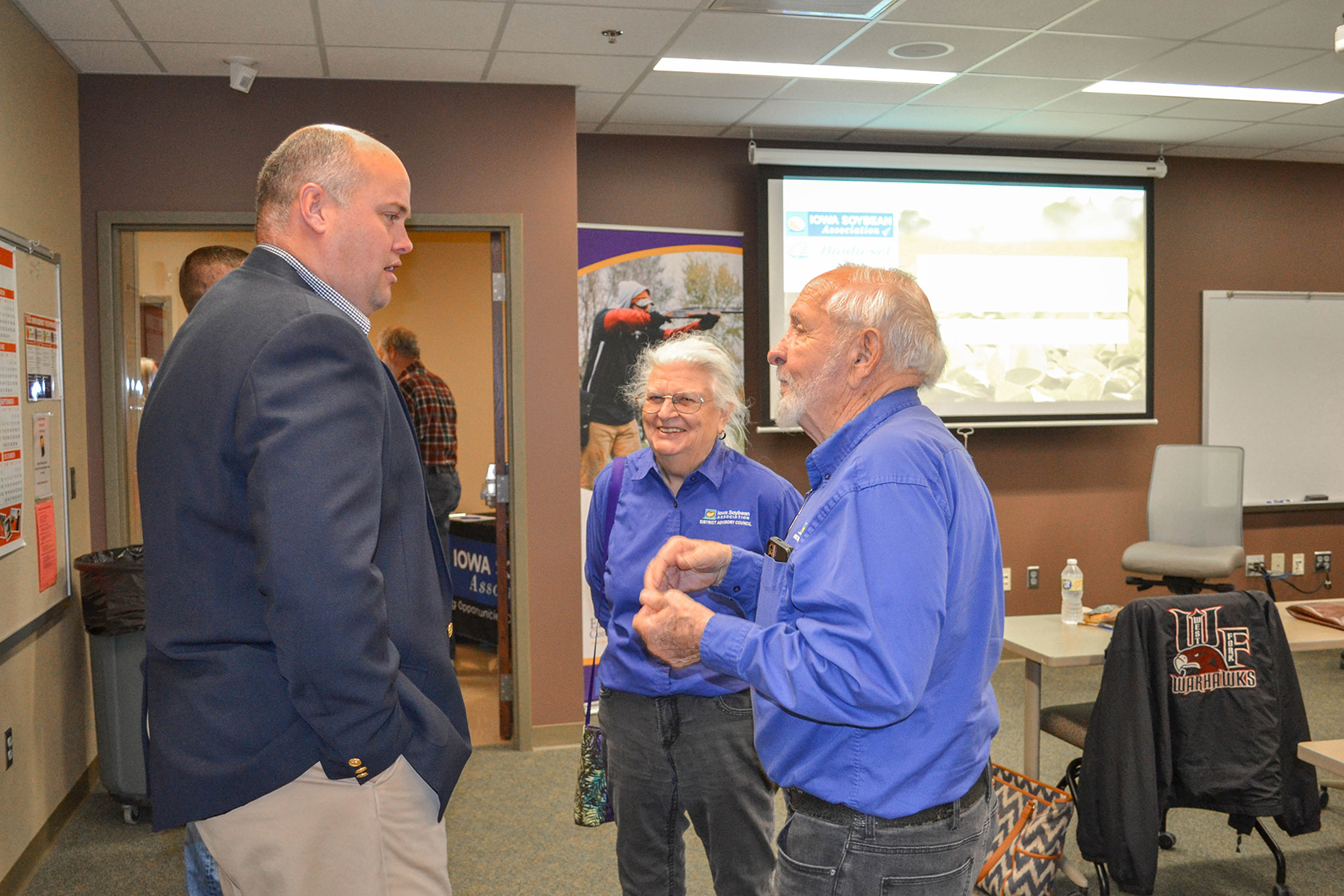
(Photo: Kriss Nelson/Iowa Soybean Association)
Macro issues affecting the soybean industries
March 31, 2022 | Kriss Nelson
More than 50 Iowa soybean farmers participated in a free-flowing discussion with representatives of Iowa Soybean Association (ISA) and Cargill March 23 in Iowa Falls.
The farmer roundtable touched on numerous topics including future demand for soybeans, changes in oil and protein composition, the rise of renewable diesel, global food and protein security and farm succession.
Panel participants included:
· Kirk Leeds, ISA CEO
· Tim Coppage, Regional Commercial Leader, Cargill
· Jake Hays, Managing Director, Oilseed Processing North America, Cargill
· Gary Kay, Director, State Government Relations, Cargill
Here’s a snapshot of that discussion:
Q: Where do you see the demand for soybeans and soybean oil in the future?
Hays says there is a positive outlook for soybeans and soybean oil, especially for renewable fuels.
“Soybean oil will be a key feedstock for growing the renewable space in both renewable diesel and sustainable aviation,” Hays says. “We look at the soybean farmer as having a great opportunity for prosperous growth for several years.”
When it comes to the food sector, Leeds says the protein plate will continue to grow, including room for more vegetable-based protein.
“The good news for soy is we will play a role of protein on the plate,” says Leeds. “The question is, what will that protein plate look like in the future? How much of that will be animal protein? How much will be vegetable protein?”
An increased demand for vegetable-based protein will come an increased awareness of sustainability, traceability and biotechnology of how vegetable proteins are produced, Leeds noted.
“It is a trend to watch,” says Leeds. “We are all in the food business, and we will be in the food business for a long time.”
Q: What are the effects of Russia’s invasion of Ukraine?
Hays says corn, wheat and sunflower markets will be pressured by production uncertainties in Ukraine.
In terms of scale, 20%-25% of the world’s wheat and corn and one-third of the world’s sunflower seed are produced in Ukraine.
Increased demand for soybean oil will be needed to fill reduced sunflower oil production in Ukraine.
“Those customers have been open to thinking of soy as that alternative,” says Hays. “It’s easy to see soy oil going into foodstuffs – they will need whatever they can get at the time.”
Planting season in the region will begin within two months, and the question remains if the infrastructure will allow for inputs to be delivered or what precisely the effect the war will have on farmers getting to their fields.
“Planting season is primarily April and May. A lot can happen between now and then. Ukrainians are resilient people. We have a lot of faith they will move faster than anyone can imagine if they get the opportunity,” says Hays.
Q: How do you see the next generation coming in? What’s the next generation look like?
The trends to larger farms will continue, panelists say. Farming in the future will look different as farmers scale up to take advantage of volume input buys and sale.
The evolution to larger and more cost-intensive operations poses challenges for younger farmers wanting to get a foothold in their chosen profession.
“We can offer programs for beginning farmers, which we already do,” says Leeds. “I think it will be farmers committing who they want to farm their land. How are you thinking through that? That is a challenge.”
There may be an opportunity for contract farming, Leeds says. It could provide an avenue for younger farmers to get their start in row crop and livestock production.
“We’ve brought a lot of folks back to the farm with livestock production,” Leeds says. “Some of these alternatives, whether organic, non-GMO or high oleic soybeans, could potentially offer young farmers with value-added options as they fulfill niche markets.”
Kay says federal policies have made farm succession complex. Rural communities also struggle to offer the quality-of-life options that many young people seek.
“Finding childcare can be difficult and the nearest hospital can sometimes be 60 miles away,” says Kay. “We need to be addressing those meat-and-potato rural issues in a holistic way or we’ll continue to see farms struggle to welcome back the next generation.”
Back